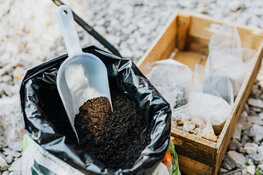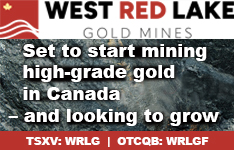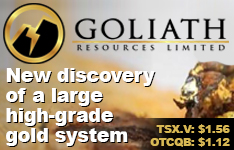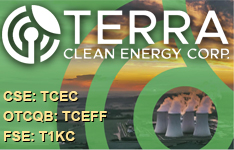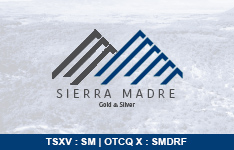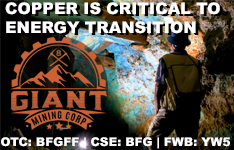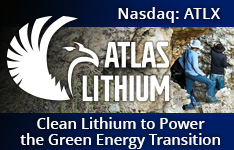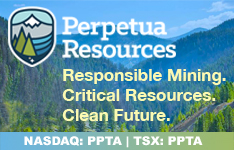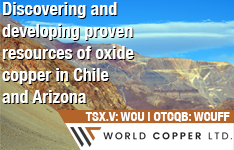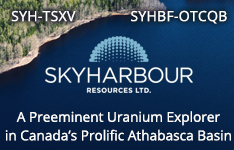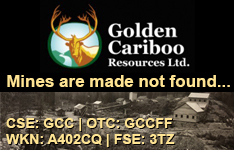Sage Potash Corp. (SAGE:TSX; SGPTF:OTC) announced that it has received approval for a US$14 million grant from the United States Department of Agriculture (USDA) to support development of its Sage Plain Potash Project located in Utah's Paradox Basin. The funding, secured through Sage Potash (USA) Corporation, the company's wholly owned subsidiary, was granted under the Fertilizer Product Expansion Program, which aims to increase domestic fertilizer production and availability.
The grant is expected to contribute significantly to Sage Potash's strategy to construct a 300,000 tonne-per-year potash facility. The company plans to implement solution mining, a method that involves injecting brine to dissolve potassium chloride underground and extracting it to the surface for processing. This method is considered safer and more environmentally efficient than traditional mining approaches.
"The USDA grant underscores the importance of increasing domestic potash capacity to serve U.S. farmers, and Sage is uniquely positioned to build incremental capacity in-market that is derisked in terms of capital, time to production, and execution," said Tim Mizuno, President and Chief Operating Officer, in a company news release.
According to the company, the Sage Plain Potash Project is expected to generate approximately 100 jobs in San Juan County, Utah. The proposed operation will use a sustainable mining and mechanical evaporation process, which the company states can reduce water waste by more than 90% compared to traditional evaporation ponds.
The project is currently advancing through permitting and technical evaluations. Engineering work is being completed in partnership with RESPEC, a firm experienced in potash development. Sage Potash stated that its upcoming Preliminary Economic Assessment (PEA), due by the end of the third quarter of 2025, will include third-party validation of project economics and a review of environmental and cultural studies already conducted.
Potash is a potassium-rich mineral that plays a central role in crop fertilization and global food production. More than 90% of potash consumed in the United States is imported, primarily from Canada, Russia, and the Middle East. In May 2025, potash was included on the U.S. Department of the Interior's draft list of critical minerals following an executive order. This designation allows companies like Sage Potash to pursue additional federal support and tax incentives.
"Sage applauds the U.S. Federal administration's decision to add potash to the critical mineral list and is grateful for the USDA grant," said CEO Peter Hogendoorn in the same release. "With this support, we are well-positioned to help grow domestic potash production, derisk the foreign supply chain for American Farmers, and create long-term value for our shareholders."
A Fertile Landscape for Growth
According to Investopedia, potash refers to a group of water-soluble potassium-based salts commonly used as fertilizer, with potassium chloride (KCl) being the most prevalent form. It has been widely applied to boost the taste, texture, yield, and water retention of crops such as corn, wheat, rice, and cotton. The report noted that "there is no substitute for potash as a fertilizer," and highlighted that 85% of potash consumption in the United States had historically gone toward agriculture. In addition to fertilizer use, potash also served as an input in soap, glass, and ceramics manufacturing.
The U.S. Geological Survey's National Minerals Information Center described the geological basis for global potash reserves in its 2025 report. It explained that ancient shallow seas had left behind potash-bearing salts, such as potassium chloride and sodium chloride, which eventually became buried deep within the earth's crust. As a result, potash production was concentrated in select regions, with Belarus, Canada, China, Germany, Israel, Jordan, and Russia responsible for nearly 94% of the world's supply. The United States had limited domestic production, with active sites primarily in New Mexico and Utah.
According to Grand View Research, the global potash market reached a value of US$62.37 billion in 2024 and was expected to grow at a compound annual growth rate (CAGR) of 5.3% through 2032. Potash demand was driven by rising global food needs, soil nutrient depletion, and increasing adoption of precision agriculture. "The agriculture end-use segment dominated the market with a revenue share of 93.1% in 2024," the report stated, attributing the growth to potash's essential role in improving crop yields, root development, and drought resistance.
The potassium chloride segment held a 53.0% revenue share in 2024 and remained the most widely used form of potash globally. Grand View Research explained that potassium chloride, often referred to as muriate of potash (MOP), was a key ingredient in nitrogen-phosphorus-potassium (NPK) fertilizer blends and was in strong demand across major agricultural economies such as India and China.
Regionally, the Asia Pacific potash market held the largest share at more than 38.4% in 2024, driven by intensive farming in China and India. Meanwhile, North America maintained a steady demand for potash based on crop production needs and the adoption of sustainable farming methods. The report noted that "local potash production supports a reliable fertilizer supply chain to American farmers at a lower cost," particularly in response to transportation risks and geopolitical disruptions in the global supply chain.
The report also addressed the rising interest in specialty potash products such as potassium sulfate (SOP) and potassium nitrate, which had lower chloride content and were suited for high-value crops like fruits and vegetables. The trend toward sustainable and controlled-environment agriculture further supported demand for these formulations.
As noted by Grand View Research, production constraints and geopolitical events continued to influence market volatility. "A significant portion of the global potash supply comes from a few countries," the report stated, with disruptions in Belarus and Russia causing supply insecurity. In response, major agricultural nations such as the United States have taken steps to secure domestic sources and reduce dependency on imports.
Planting Seeds for Future Production
According to Sage Potash's investor presentation, the company has completed engineering and permitting work for a 150,000 tonne-per-year pilot facility, with the ability to scale up to 300,000 tonnes upon approval. The company has secured an unused European fertilizer processing plant, which will reduce capital costs and expedite construction. The modular design of the plant allows for phased expansion and integration with Sage Potash's solution mining operations.
Sage Potash holds an inferred resource of approximately 280 million metric tonnes of high-grade potash within Utah's Paradox Basin. The deposit is characterized by flat-lying geology, low insoluble content, and ideal temperatures for solution mining. The company has secured approximately 90,000 acres of mineral rights and received key permits for water access, cavern development, and waste disposal.
 Streetwise Ownership Overview*
Streetwise Ownership Overview*
Sage Potash Corp. (SAGE:TSX; SGPTF:OTC)
Utah's regulatory environment has been supportive, with approvals from the Division of Oil, Gas, and Mining and the Department of Environmental Quality. The company is proceeding under a Large Mine Operation permit application and intends to expand operations pending further approvals.
With increasing domestic demand and a high reliance on imports, Sage Potash's strategy aligns with recent efforts to bolster the United States' critical mineral supply chains. The addition of potash to the critical minerals list provides further opportunities for funding and policy support as the company moves toward production.
Ownership and Share Structure
According to Refinitiv, 0.24% of Sage Potash is held by management and insiders. The rest is retail.
Sage Potash has a market capitalization of CA$28.19 million. It has 105.63 million free float shares and a 52-week trading range of CA$0.13 - CA$0.39
| Want to be the first to know about interesting Agriculture investment ideas? Sign up to receive the FREE Streetwise Reports' newsletter. | Subscribe |
Important Disclosures:
- As of the date of this article, officers and/or employees of Streetwise Reports LLC (including members of their household) own securities of Sage Potash.
- James Guttman wrote this article for Streetwise Reports LLC and provides services to Streetwise Reports as an employee.
- This article does not constitute investment advice and is not a solicitation for any investment. Streetwise Reports does not render general or specific investment advice and the information on Streetwise Reports should not be considered a recommendation to buy or sell any security. Each reader is encouraged to consult with his or her personal financial adviser and perform their own comprehensive investment research. By opening this page, each reader accepts and agrees to Streetwise Reports' terms of use and full legal disclaimer. Streetwise Reports does not endorse or recommend the business, products, services or securities of any company.
For additional disclosures, please click here.



